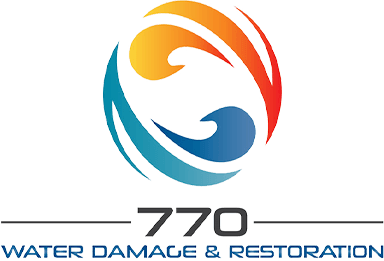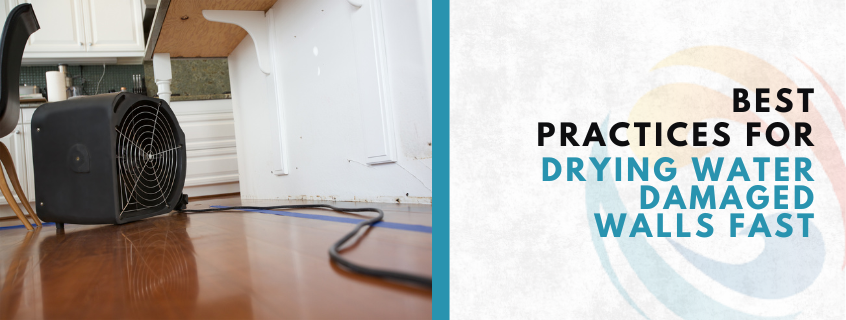
Water damage can be a homeowner’s worst nightmare. Whether it’s from a leaking pipe, a broken appliance, or severe weather, the aftereffects can be devastating. Among the many issues that arise, drying water damaged walls fast is crucial to prevent further complications like mold growth and structural damage. In this article, we’ll explore effective methods and best practices for drying water damaged walls fast that can help you tackle this problem efficiently and effectively. Drying water damaged walls fast is important to protect your home.
Imagine coming home after a heavy rainstorm to find water seeping through your walls. The first thing that hits you is panic. You might wonder how much damage has been done and what you should do next. But don’t worry; we’re here to guide you through this process step by step, offering real-world solutions to get your home back in shape quickly.
Drying water damaged walls fast is essential to maintaining the integrity of your home and ensuring a healthy living environment. When walls remain damp for too long, they can suffer from structural weakening, warping, and mold growth—all of which compromise the safety and comfort of your home. Swift action helps prevent these issues before they take hold, preserving both the physical condition of your property and the well-being of everyone inside.
Addressing moisture quickly not only protects the materials that make up your walls, such as drywall, insulation, and framing, but also stops the spread of harmful mold spores that thrive in wet environments. Drying water damaged walls fast minimizes the risk of long-term repairs, costly restorations, and health problems caused by poor indoor air quality. Taking immediate, knowledgeable action after water damage is key to safeguarding your home and creating a safe, durable living space for years to come.
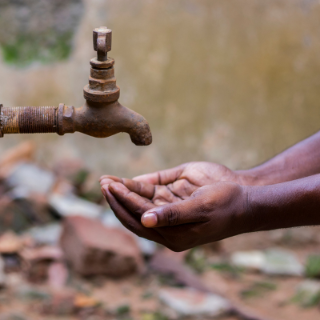
Understanding the Importance of Quick Drying
When water infiltrates your walls, it can lead to numerous problems. Not only does it weaken the structure of your home, but it can also create a breeding ground for mold and mildew. Just last summer, my friend Sarah experienced this firsthand when a storm led to water pooling in her basement. Within days, she noticed a musty smell and saw some black spots forming on the wall. It’s critical to tackle such situations promptly, as it can save you from expensive repairs and health issues down the line.
By focusing on drying water damaged walls fast, you can significantly mitigate the risk of mold development and other moisture-related problems. Mold thrives in damp, enclosed spaces, and if walls are not dried promptly, it can spread quickly, leading to health hazards and costly remediation efforts. Acting quickly not only protects the structural integrity of your home but also maintains a safe and healthy living environment.
Understanding the urgency of drying water damaged walls fast is essential in mitigating long-term issues. Prolonged moisture exposure can cause permanent damage to building materials, weaken foundations, and result in unpleasant odors and air quality concerns. By prioritizing fast and effective drying methods, you help ensure that water damage remains a short-term setback rather than a long-term, expensive problem.
The First Steps After Water Damage
- Assess the Damage
Before diving into the drying process, it’s essential to evaluate how extensive the water damage is. Check the walls, floors, and any furniture in the vicinity. You might want to take photos for insurance purposes. If the damage is severe, like structural compromise, consider contacting a water damage restoration professional immediately. - Shut Off Water Supply
If the damage is due to a burst pipe or appliance leak, turn off the water supply to prevent further water intrusion. This is a critical step that many overlook in their haste to start the cleanup. - Remove Standing Water
Use a wet/dry vacuum or towels to absorb any standing water. The sooner you can remove this excess water, the easier the drying process will be.
Implementing effective techniques for drying water damaged walls fast will help restore your home quickly and efficiently. Acting with speed and precision not only prevents further structural damage but also reduces the risk of mold growth and other moisture-related issues. Using the right drying methods—such as improving ventilation, using dehumidifiers, and employing professional-grade drying equipment—ensures that hidden moisture is completely removed, safeguarding your home’s integrity.
By focusing on drying water damaged walls fast, you not only minimize repair costs but also protect the health of everyone living in the space. A thorough and rapid response creates a solid foundation for full restoration, helping your home return to a safe, comfortable condition without lingering problems.
Techniques for Drying Water Damaged Walls Fast
When handling dry out water damage, it’s important to understand how long it take to dry and what influences the process. Generally, it can take anywhere from a few days to over a week, but the exact timeline depends on several factors affecting drying time. These factors include the severity of the water damage, the type of materials involved, the indoor humidity levels, and how much ventilation is available. Managing these factors carefully can help speed up drying and prevent further problems like mold growth.
When dealing with water intrusion, drying water damaged walls fast is crucial to minimizing further harm. Water that lingers within walls creates the perfect environment for mold to grow, potentially leading to serious health risks and extensive property damage. By drying water damaged walls fast, you help protect the structure of your home or building, preserve the integrity of materials, and maintain a safe, healthy indoor space.
Understanding the urgency of drying water damaged walls fast is essential in mitigating long-term issues such as mold infestations, wood decay, structural weakening, and costly renovations. The faster you address the moisture, the better chance you have of preventing permanent damage. Immediate action not only saves time and money but also safeguards the value and safety of your property. Prioritizing drying water damaged walls fast is one of the most effective steps you can take after any water-related incident.
Increase Airflow
One of the best ways to dry walls quickly is by improving airflow in the affected area. Open windows and doors to create cross-ventilation. The stronger the airflow, the faster the drying process.
By using towels or absorbent rags while drying water damaged walls fast, you can further enhance moisture removal.
- Tips for Enhancing Airflow:
- Use fans to circulate air. Point them toward the wet walls to bog down moisture.
- Dehumidifiers are excellent for removing excess moisture from the air. This can complement your fan strategy.
In Sarah’s case, she strategically placed fans near the wet wall, and by the next day, the area felt significantly drier.
Applying heat wisely contributes to the process of drying water damaged walls fast without causing harm.
Use Towels or Absorbent Rags
Drying water damaged walls fast is essential for restoring your home effectively and preventing further complications. By implementing the right techniques, such as using dehumidifiers, improving air circulation, and employing professional drying equipment, you can quickly remove moisture and protect your home from structural damage and mold growth.
Drying water damaged walls fast not only helps to preserve the integrity of your home, but it also minimizes the risk of long-term issues like mold infestations, wood rot, and unpleasant odors. A prompt response ensures that moisture doesn’t linger in the walls, which could lead to costly repairs and health risks. By prioritizing drying water damaged walls fast, you’re taking a crucial step in restoring your home to a safe, livable condition.
- Procedure for Absorbent Rags:
- Soak up as much water as possible from the wall with towels or rags.
- Ensure you wring out and replace towels regularly to avoid reinserting moisture into the wall.
Monitoring humidity levels is crucial when drying water damaged walls fast to ensure success.
Apply Heat Wisely
Heat can assist in the drying process, but it has to be applied cautiously. You don’t want to create a fire hazard!
- Safe Heating Techniques:
- Use electric heaters on a low setting to warm the room where the walls are wet.
- Avoid using ovens or gas ranges for heating, as these can release harmful gases.
During her mishap, Sarah placed a small electric heater in her basement. It helped raise the room temperature, reducing dampness in the walls quickly.
Monitor Humidity Levels
Keeping an eye on the humidity in the room is essential. A hygrometer can help track moisture levels, ensuring they remain within a comfortable range.
- Humidity Levels to Aim For:
- Ideal indoor humidity should be between 30% and 50%.
- If levels are above this range, increase the usage of dehumidifiers.
Understanding how to start drying water damaged walls fast can save you time and money in the long run.
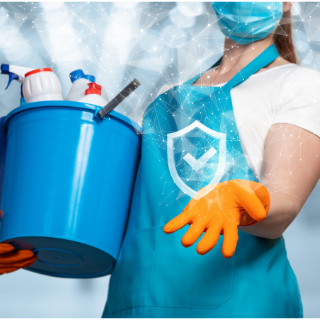
What Happens If You Don’t Act Fast?
Time is of the essence when it comes to drying water-damaged walls fast. If water damage is not adequately addressed within 24 to 48 hours, mold can begin to develop. In fact, some types of mold can start to grow within just a day or two after water exposure. This leads to health concerns like allergies, respiratory issues, and other ailments.
With the right approach to drying water damaged walls fast, you can protect your home from long-lasting and costly damage. Acting quickly not only stops moisture from spreading deeper into the structure but also prevents issues like mold growth, wood rot, and compromised building materials. Drying water damaged walls fast is a critical first step in preserving the safety, health, and value of your property.
Remember that drying water damaged walls fast requires both urgency and a solid understanding of the best practices. Simply removing surface moisture is not enough—thorough drying involves proper ventilation, dehumidification, and sometimes professional equipment to ensure that hidden moisture is eliminated. Without the right methods, you risk leaving behind damp areas that can silently cause serious damage over time.
The financial cost of dealing with mold removal, structural repairs, and even health issues often far exceeds the initial investment in proactive prevention measures like drying water damaged walls fast. By addressing water damage immediately and effectively, you not only save money but also avoid the stress and disruption that come with major restoration projects. In short, prioritizing fast and proper drying is one of the smartest decisions you can make after water damage occurs.
When to Seek Professional Help
Although DIY methods can be effective, some situations may require professional intervention.
- Signs You Should Call a Professional:
- Extensive Damage: If the water damage is widespread or affects structural components, it’s best to consult with a restoration service. For example, if walls are swollen, showing discoloration, or if you notice bubbling paint, these indicate deeper issues that could require expert assessment.
- Mold Growth: If you see signs of mold or smell mustiness even after drying the area, it’s crucial to remove it safely to avoid health risks. Professionals have the right tools and expertise to manage mold removal effectively.
- Difficulty with Drying: If, despite your best efforts, the walls remain damp or you can’t seem to get them dry, it’s a signal that professional equipment might be necessary. Commercial dehumidifiers and drying equipment can make a significant difference.
Final Best Practices to Ensure Effective Drying
- Insulate Properly
If your home has plumbing behind walls, ensure that any insulation is dried or replaced if it got wet. Wet insulation can retain moisture and cause ongoing problems, so always check behind damaged walls. - Keep Up Regular Maintenance
Once the immediate situation is handled, consider conducting regular maintenance check-ups. Inspect pipes, roofs, and seals on windows regularly to prevent future water damage. - Educate Yourself About Water Damage Risks
Understanding potential causes of water damage in your home can make all the difference. Simple measures like disconnecting hoses in the winter or ensuring your gutters are clear can help mitigate larger issues down the road. - Document Everything
As mentioned earlier, document the damage right from the start. Taking images and notes will aid in any insurance claims you might need to file, making it easier to seek compensation for damage repairs. - Act Quickly
The most vital rule of thumb is to act as soon as you discover water damage. The quicker you start drying water-damaged walls fast, the lesser the risk of further damage and mold growth.
Conclusion
Water damage doesn’t have to become a disaster that spirals out of control. With the right knowledge and resources, you can effectively manage drying water damaged walls fast. By following the outlined best practices, and knowing when to seek help, you can protect your home, your health, and your peace of mind.
Remember, proactive measures, combined with swift action, can make all the difference in keeping your living space safe and comfortable. At 770 Water Damage & Restoration, we understand that these situations can be overwhelming, but you’re not alone. Whether you need immediate assistance or just information to prepare for potential issues, we’re always here to help. Don’t hesitate to reach out!
Visuals for Better Engagement
To enhance your understanding, consider incorporating the following visuals:
- Flow Diagram of Drying Steps: A flow diagram can visually lay out the key steps to take after discovering water damage, making it easier to remember.
- Comparison Table: Create a table that contrasts DIY methods vs. professional services for handling water damage, detailing pros and cons of each for quick reference.
- Humidity Tracking Chart: A simple chart illustrating ideal humidity levels over days can help readers see how quickly indoor conditions can change with proper drying efforts.
By effectively sharing this knowledge and providing actionable solutions, we can empower homeowners to tackle water damage responsibly and efficiently, ensuring that homes remain safe havens for families everywhere.
Essential FAQs about drying water damaged walls fast can provide valuable insights for homeowners.
1. How quickly can I dry out water-damaged walls?
Drying water-damaged walls fast is essential for preventing mold growth and further damage. At 770 Water Damage & Restoration, we recommend starting the drying process within 24 hours of water exposure. Utilizing fans, dehumidifiers, and proper ventilation can significantly speed up the process. Our team can also assess any damage and provide expert assistance to ensure your walls are dried effectively.
2. What are the signs of water damage that I should look for?
Common signs of water damage include discoloration or staining on walls, bubbling paint, peeling wallpaper, and a musty odor. You may also notice soft or warped areas in drywall. If you observe any of these symptoms, it’s crucial to contact 770 Water Damage & Restoration for a thorough inspection and prompt treatment to prevent further issues.
3. Should I attempt to dry water-damaged walls myself or hire a professional?
While small areas of water damage may be handled with DIY methods, we at 770 Water Damage & Restoration recommend hiring professionals for extensive damage. Our trained experts have the necessary tools and knowledge to dry out water-damaged walls fast, ensuring that all moisture is eliminated, which is critical for preventing mold and structural problems.
4. What equipment does 770 Water Damage & Restoration use for drying?
We use specialized equipment, including industrial-strength dehumidifiers and air movers, to efficiently dry water-damaged walls. These tools are designed to quickly remove moisture and reduce humidity levels in your home. Our professional team ensures that the drying process is thorough and effective, safeguarding your property from future damage.
5. How can I prevent water damage in my home?
Preventing water damage involves regular home maintenance. Check for leaks in plumbing, clean gutters regularly, and ensure proper drainage around your foundation. Additionally, you can consider installing sump pumps in high-risk areas. 770 Water Damage & Restoration also offers inspection services to identify potential vulnerabilities in your home and guide you in implementing preventative measures.
